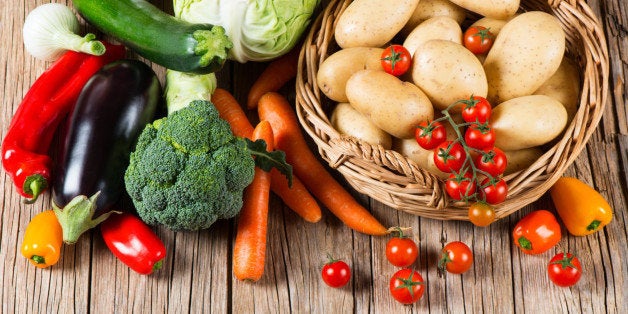
I was heartened to hear that one of the big trends for 2016 is vegetables. According to NPR's Bonny Wolf vegetables have moved from the side to the center of the plate. The National Restaurant Association surveyed chefs on what's hot, and vegetable-centric dishes are becoming the highlight of many menus.
But the more plant-centric movement isn't limited to restaurants. The Healthy Hunger-Free Kids Act went into effect in 2012. Its goal was to improve the nutritional value of school meals by increasing the availability of fruits, veggies and whole grains and every school meal now includes a choice of a fruit or a veggie that also got a portion size boost.
Change isn't easy, and many predicted that serving more fruits and veggies, and requiring all kids to have some plants on their tray would just lead to more waste.
It's still early days, but a new crop of studies suggests that serving a better lunch does change the way kids eat. In a study that compared school meals in 12 Connecticut schools before and after the implementation of the new standards by weighing a photographing these meals, researchers found that kids ate almost 20 percent more of their veggies in 2014 compared to 2012. A study conducted in 4 schools in Massachusetts showed that after the implementation of the healthier lunch program kids ate 16 percent more of their veggies. Another study that took place in 8 Texas elementary schools found that in 2013, after the menu change, significantly more students selected fruits and veggies, and this did not lead to greater waste - putting more plant foods on the tray led to greater consumption. A brand new study didn't look at fruits and veggies directly, but rather at meal nutrients such as vitamins A and C, and fiber that - in the case of these Washington State school lunches - come from them, and found significant increases after the new standards kicked in.
Again, change isn't easy nor is it fast, and I'm not suggesting that we've solved childhood obesity or school lunch's overly processed nature, but it's encouraging to see that if you give fruits and veggies a chance, and serve them in an environment with fewer junk-food distractions, hungry kids will bite. Generally, larger portion sizes make us eat more, and this is also true for fruits and veggies. And the doomsday predictions and anecdotal stories about kids dropping out of the school lunch programs in droves, or dumping their tray intact, didn't materialize according to more cool-headed investigations.
If vegetables do become a food trend it will definitely help us eat and enjoy more of them. We'll surely see better produce, new and superior preparation techniques and tie-ins with celebrity and popular culture. It will be easier to eat better.
Dr. Ayala
This is a crosspost of my blog, Healthy Food & Healthy Living, where you can reach me at ayala@herbalwater.com.